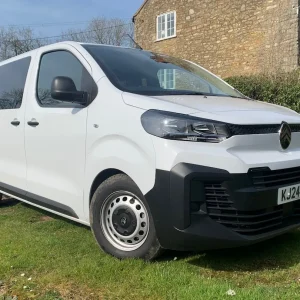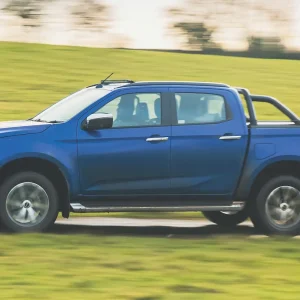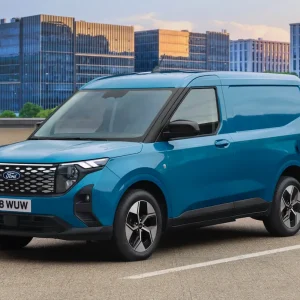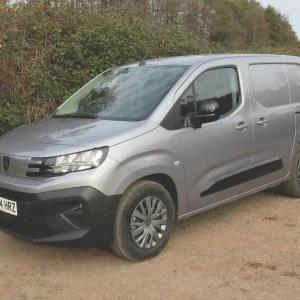Nissan is confident the time is right for its E-NV200 electric LCV to make a big impact on the UK market.
Buoyed by its deal with British Gas, which has ordered 100 of the plug-in light vans, Mathieu Lenglin, EV product manager, declares the E-NV200 is a “game changer” that could see diesel vans disappear from the city streets of the future.
Lenglin claims that with a range of 106 miles on a full battery charge, the vehicle could already easily meet the needs of a potential 200,000 customers across Europe – the 35% of compact van drivers who, he says, never cover more than 74 miles a day.
In designing the E-NV200 Nissan has blended elements of its electric passenger car, the Leaf, with the load carrying capabilities of the NV200 LCV, although the brand claims 30% of components are unique to the electric van. It has a re-engineered chassis, a revised interior, a new battery pack and a higher capacity regenerative braking system, according to Nissan .
“It’s a re-engineered product, not just a re-working of an existing product,” says Lenglin.
The E-NV200 has a substantial payload capacity of 770kg, marginally more than the conventional model’s 740kg. This is made possible, Nissan says, by a reduced weight axle.
The manufacturer claims the E-NV200 panel van’s load volume of 4.2m3 is class leading in the light van sector overall, with the exclusion of the high-roof versions of the Fiat Doblo Cargo and Vauxhall Combo.
The load box can be reached through sliding doors on both sides of the body or through a choice of asymmetrical rear doors, which can be specified glazed or solid, or a tailgate. The loading height through the rear is 520mm.
Nissan calculates the maintenance costs of its electric van are 40% cheaper than those of a diesel-powered model due to the fact that it doesn’t have an engine. Therefore it is less susceptible to wear and tear – without engine oil, belts, gearbox or clutch there are fewer parts to be checked or replaced.
As Lenglin puts it: “Only the windscreen washer liquid goes under the bonnet.”
Fuel costs are also significantly lower, with an electric charge up to four times cheaper than the equivalent diesel required.
These savings should help to alleviate the prohibitive starting price for the entry-level Acenta of £16,562 for an outright purchase of van and battery, once the Government’s 20% Plug-in-Van Grant has been subtracted.
Having got behind the wheel of an E-NV200 in Barcelona we would agree with Nissan’s assertion that driving an electrically-powered van does take much of the stress out of negotiating busy city streets. It’s not just the absence of a manual gear box, the E-NV200 has Park, Reverse and Drive modes, with the choice of a B-option to increase regenerative braking, which is particularly handy when going down steep hills. The 80kW electric motor, which is mounted in the engine bay, is engaged by pressing a button on the dash when in Park mode and a green icon appears on the speedometer dial when you are ready to move off, having disengaged the conventionally levered handbrake. Once Drive is selected the vehicle begins to progress silently, which is disconcerting at first but, we found, rapidly enhances a relaxing driving experience. The ride in D-mode is remarkably quiet and smooth but when reverse is selected a beeper sounds to alert unsuspecting pedestrians to your approach. A reversing camera increases security and reduces the risk of any unwanted crunches shattering the tranquility.
A Nissan-developed 48-module compact Lithium-ion battery powers the motor. It is assembled into a pack configured for the E-NV200 to avoid encroaching into the load area and mounted under the floor within the wheelbase to keep the centre of gravity as low as possible to improve the drive.
In D-mode acceleration is brisk with 254Nm of torque available but an Eco button can be pressed to reduce power and save energy. In B-mode the van slows sharply when the throttle is released but without the jolt often associated with EVs, which means the brake peddle rarely needs to be used.
The cabin loses out through a dearth of storage facilities and a driving position that is hindered by a seat that only moves backwards and forwards, although it does have an adjustable back, and through a steering wheel that is height but not reach adjustable.
The E-NV200 is available in five trim levels from the base Acenta through to Acenta Rapid, Acenta Rapid Plus, Tekna Rapid and on to the flagship Tekna Rapid Plus, which has an outright purchase price of £19,325. Nissan is also offering a Flex option whereby customers lease the battery for £61 a month. This cuts the initial outlay on the base level van to £13,393 and sees the top of the range model cost £16,156. Lenglin predicts four out of five customers will opt to buy outright.
All versions get ESP and even the Acenta comes with features such as the rear view camera, ipod and MP3 compatibility and a full bulkhead. Moving up the range brings on board the likes of air con, cruise control, alloys and the Carwings cellular data transmitter that allows operators to download an app in order to view battery charge remotely.
The charging port is located on the front of the van, which can be fully charged within eight hours with a domestic 16-amp supply but this reduces to four hours if the 32-amp charger added to the line-up with the Acenta Rapid Plus is used. Alternatively a 50kW quick charger can recharge the battery to 80% in 30 minutes.
Verdict
The E-NV200 drives well, is an effective workhorse and makes a compelling case for the use of electric vans on fixed urban routes.





